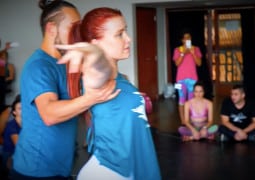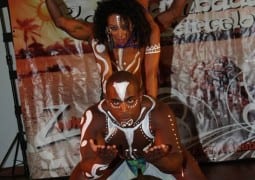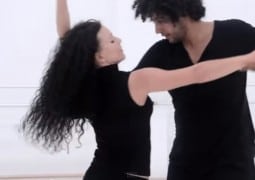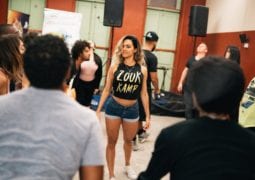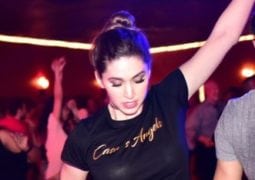Dance Whispering: True Leading & Following and the Science of How Healing It Is
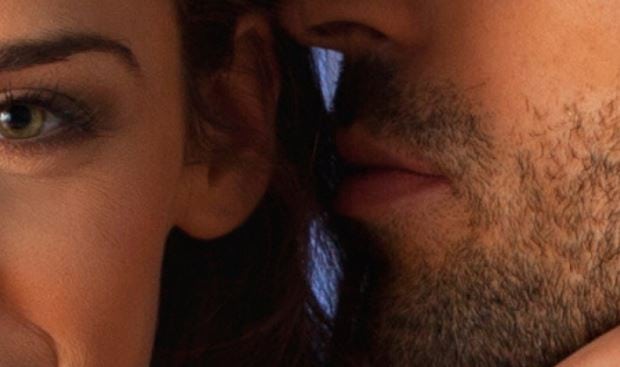
Dance Whispering: Avoid the pain and discomfort of getting hurt or hurting your dance partner, and effortlessly create the ultimate pleasure state, every time.
The antithesis: Dance Shouting
To fully grasp what Dance Whispering looks like in practice, we must first understand what it is not. In stark opposition to Dance Whispering sits Dance Shouting. Dance Shouting occurs when we raise the volume of our resistance, strength or force in leading.
Dance Shouting for Leaders
When the leader is Dance Shouting, the lead is rough. The follower feels manhandled, may feel like a rag doll and in a best-case scenario they experience discomfort. In a worst-case scenario the follower experiences pain and/or injury.
Dance Shouting for Followers
Similarly, when the follower is Dance Shouting they will most likely struggle to follow unless the leader increases the volume of their Dance Shouting. Even then, the degree of strength applied results in what would feel more like a wrestling match than a dance. We often focus on followers being injured (which statistically is more common), however leaders may also suffer discomfort, pain and injuries at the ‘hands’ of Dance Shouters who are followers.
In fact, I would argue that a Dance Shouter is neither a LEADER or a FOLLOWER. To me, this would be like calling a bully a great persuader. It would be wrong for us to consider that someone is skilled in the art of persuasion if they are only able to motivate others into action if they are using a gun or violence to drive others to do what they want. Someone who is truly skilled at persuasion is able to guide behavior gently.
In other fields, violence and forcefulness is not something that is celebrated. Yet in partner dancing, we often inadvertently celebrate Dance Shouters. Worse still, we don’t seem to promote the benefits of its opposite: Dance Whispering. When I was in elementary school, one of my teacher’s would say that if we criticize something we should introduce a solution. We should not only condemn and discourage Dance Shouting, we must teach, practice and spread its counter: Dance Whispering.
The Solution: Dance Whispering
Dance Whispering occurs when we lower the volume of our resistance, strength or force. When the leader is Dance Whispering they elicit a sense of calm from the follower, putting the follower at ease and in a trance of trust.
Dance Whispering for Leaders
With a soft, careful, gentle but clear touch, the leader focuses the communication to a specific point. This point becomes the ‘leading point’. Everything else is tuned out, which raises focus and sensitivity. When the follower feels assured that the soft touch that is guiding them has no risk to be a source of discomfort, pain or harm, the follower is able to fully surrender. This happens not only due to the absence of discomfort and pain, but more specifically because of the presence of clarity and pleasure which are unhampered by other noise, distraction or sensory stimulation.
For example, if a leader jerks a follower’s arm with significant force, the follower enters a defense mode. This is signaled by the clenching of their fist, by the flexing of their muscles. The follower enters a state of protection and heightened awareness; essentially, a primed response to perceived threat of potential danger. Instead, by using soft, gentle touch, leaders have the “power” to guide the followers to enter a state of trust.
Dance Whispering for Followers
When the follower is Dance Whispering, they turn down the volume of their resistance, strength or force in order to turn up the volume of their sensitivity. This allows them to feel more and to think less by eliminating the unnecessary ‘noise’. They also turn down the volume of other stimuli around them to fully focus their attention on the lead. Some followers may even choose to close their eyes at times when they want to enter an extremely high sensitivity state, also known as a full surrender. When a follower is Dance Whispering the leader feels that they are deeply connected. The signals the leader is sending are being received and acted upon. Just like Newton’s third law, “For every action, there is an equal and opposite reaction”. Thus, when there is a soft “action” leading/guiding/dance whispering to the leader’s right, there will be a soft reaction following to the follower’s left. Dance Whispering is the SCIENCE of TRUE LEADING and TRUE FOLLOWING.
The Science Behind Dance Whispering
When a leader or follower Dance Shouts, they trigger the left side of the partner’s brain, specifically, the limbic left, which is where our amygdala can be found. The brain perceives any strong movements on the part of the leader or follower as a possible threat to safety. Because this perceived ‘threat’ is alarming to our defenses, the brain sends signals which cause our body to respond physiologically and this activates our inbuilt protective mechanism. In other words, we will not be able to relax, On the contrary, our bodies tense up.
On the other hand, when a leader or follower engages in Dance Whispering, they trigger the right side of their partner’s brain. Soft touch is perceived by the brain as being relaxing and comforting. This allows our brain to enter a rest mode, similar to what we experience when we fall asleep to human touch during a soft massage. Our bodies respond to the signal our brain sends, which is essentially one that helps us relax. In other words, we enter a trusting place, which allows the connection between the leader and follower to be deepened. By becoming more deeply connected, we are be able to lead and follow better.
The Science behind Human Touch Therapy and how it is related to Dance Whispering
Human Touch Therapy is a science. From the moment we are born we crave a soft, caring touch. Scientists claim that this craving is because on a subconscious level we recall the comfort of the womb and seek to recreate it. As a result, we have a desire to seek comforting environments that simulate that same feeling of safety and security. Behaviors that simulate this feeling of comfort include the act of cuddling, spooning and hugging someone else. I would argue that the ‘4 minute embrace’ that we share with our partner while dancing also simulates this same feeling of comfort and safety. When we are held closely and we hear another person’s heartbeat, feel their pulse or synchronize to their breathing, it creates an organic sensation of comfort and familiarity because it simulates the same sounds and feelings of warmth and closeness that we experienced in the womb. Consequently, a hug, an embrace, cuddling and soft touch is something that we crave by virtue of being human. When this primed desire for physical connection is met, it has hugely healing properties.
One of the reasons we love to partner dance is because of the HTT – ‘Human Touch Therapy’. Dancing satisfies this desire we all have for physical connection, and the beneficial effects of HTT are received without even the realization that we are engaged in it. However, the wrong type of touch will set off our alarm system: our fight or flight mode.
As mentioned earlier, the ‘wrong’ type of touch activates the limbic left of the brain, where our amygdala sits. “The amygdala is our 24/7 alarm center, constantly scanning the environment for threat or danger, even in our sleep. The amygdala is also the core of our interactive social processing and the center of our emotional learning. The amygdala assesses every experience, including relational experience, for safety or danger, for pleasure or pain, and pairs each experience with an emotional valence, an emotional charge, positive or negative, that makes us approach or avoid similar experiences in the future. The more intense the emotional charge, the more neurons will fire in our brain and the more likely we will register the experience in implicit memory.”*
If a follower has been dipped the wrong way or has been the victim of Dance Shouting through rough leading, they have a primed, subconscious response to avoid similar moves. This is a protective survival mechanism to protect them from harm, and will manifest itself more strongly if they are dancing with another Dance Shouter. The beautiful thing about our amygdala is that it allows us to continue to create new responses and form new ‘memories’. So, a Dance Whisperer can help simply by Dance Whispering. With a soft, gentle and clear lead, the leader who is Dance Whispering can communicate safety and pleasure to the follower. When the lead communicates a dip, and the follower follows, they can thereby create a new positive memory that can substitute or replace the old one. Through neuroplasticity, the brain can rewire itself in response to new experiences.
Dance Whispering is not simply effective and respectful leading and following techniques; Dance Whispering has healing effects. Here are my tips on how we can all be part of the solution.
LEADERS: Always pleasure, never pain
Being only a source of pleasure is so easy to do. All that is required is that you lead gently 100% of the time. Even if you mistakenly try to lead the follower in a way that their anatomy doesn’t naturally move, the soft gentle and responsive lead can easily be halted and redirected mid-movement. The follower is then easily able to consent, or not consent, to the lead.
By way of example, if a follower who has a severe neck and back injury is being led by a Dance Whisperer, the follower can easily choose not to dip, even if they are led into one. They simply retract consent for that move and the Dance Whisper not only listens, but alters their lead into something else to which the follower consents. However, if the follower is being led by a Dance Shouter, the follower has no ability to communicate that they don’t want to dip. Dance Shouters lead with force and do not stop until they complete what they are ‘shouting’. Dance Shouters are inflexible, inconsiderate and definitely dangerous. On the other hand, a Dance Whisperer asks for consent for every move they lead. In this way, they are able to avoid injury and discomfort, AND become the source of great pleasure. Because the Dance Whisperer will only lead moves to which followers consent, the dance being constructed is considered as “follower’s choice”.
Leaders, if the follower is Dance Shouting, the most appropriate course of action is to whisper even lower. Reduce your force and soften your lead. The follower will detect that they cannot feel your lead and will lower their resistance and strength so they are better able to ‘hear’ what you are communicating. If the follower is shouting to such a degree that your fingers, hands or arms are entering a state of danger, I recommend using your words. Once danger is a possibility, you must verbally communicate to your partner that they are in risk of hurting you. Not doing so can have severe results.
FOLLOWERS: Avoiding injury
Followers, if the leader is Dance Shouting, the most appropriate course of action is to communicate verbally. Let the leader know that you prefer a softer or gentler lead. If they respond in a rude manner, you are fully entitled to stop the dance, of course. You should not put yourself at risk. If the leader is shouting to such a degree that you are entering a state of dancer, I recommend stopping the dance immediately and letting the leader know it is too strong and causing you discomfort and/or pain. Not doing so can have severe results and can risk injury.
Followers your resistance and strength level should never exceed that of the leader. If it does, you could be entering the state of Dance Shouting and may cause discomfort or injury to the leader. The exception to this rule is if you are required to exert excess resistance or strength to protect yourself in the middle of a strong and forceful lead. Of course, our natural human instinct is to protect ourselves and tense our muscles if we feel at all in danger, it goes without saying. However it is still important to be aware that you may sometimes need to take that extra precaution and care when you are in a state of Dance Whispering but your partner is entering a state of Dance Shouting. By being present in the now, you will easily be able to detect when you need to enter protective mode, as a matter of fact, your body and your brain subconsciously will detect it even before you consciously processes it. But, you must be present in the moment and following your natural instincts.
Soft, gentle and clear leading and following does not simply constitute good dancing technique. It can also be extremely therapeutic.
Human Touch Therapy: Further Evidence
The following excerpt is taken from an article by Dacher Keltner on the science of touch. (http://greatergood.berkeley.edu/article/item/hands_on_research)
“Regrettably, though, some cultures are pretty touch-deprived, and this is especially true of the United States.
Ethologists who live in different parts of the world quickly recognize this. Nonhuman primates spend about 10 to 20 percent of their waking day grooming each other. If you go to various other countries, people spend a lot of time in direct physical contact with one another—much more than we do.
This has been well-documented. One of my favorite examples is a study from the 1960s by pioneering psychologist Sidney Jourard, who studied the conversations of friends in different parts of the world as they sat in a café together. He observed these conversations for the same amount of time in each of the different countries.
What did he find? In England, the two friends touched each other zero times. In the United States, in bursts of enthusiasm, we touched each other twice.
But in France, the number shot up to 110 times per hour. And in Puerto Rico, those friends touched each other 180 times (per hour)!
Of course, there are plenty of good reasons why people are inclined to keep their hands to themselves, especially in a society as litigious as ours. But other research has revealed what we lose when we hold back too much.”
The benefits start from the moment we’re born. A review of research, conducted by Tiffany Field, a leader in the field of touch, found that preterm newborns who received just three 15-minute sessions of touch therapy each day for 5-10 days gained 47 percent more weight than premature infants who’d received standard medical treatment.
Similarly, research by Darlene Francis and Michael Meaney has found that rats whose mothers licked and groomed them a lot when they were infants grow up to be calmer and more resilient to stress, with a stronger immune system. This research sheds light on why, historically, an overwhelming percentage of humans babies in orphanages where caretakers starved them of touch have failed to grow to their expected height or weight, and have shown behavioral problems.
From this frontier of touch research, we know thanks to neuroscientist Edmund Rolls that touch activates the brain’s orbitofrontal cortex, which is linked to feelings of reward and compassion.
We also know that touch builds up cooperative relationships—it reinforces reciprocity between our primate relatives, who use grooming to build up cooperative alliances.
There are studies showing that touch signals safety and trust; it soothes. Basic warm touch calms cardiovascular stress. It activates the body’s vagus nerve, which is intimately involved with our compassionate response, and a simple touch can trigger release of oxytocin, aka “the love hormone.”
In a study by Jim Coan and Richard Davidson, participants laying in an MRI brain scanner, anticipating a painful blast of white noise, showed heightened brain activity in regions associated with threat and stress. But participants whose romantic partner stroked their arm while they waited didn’t show this reaction at all. Touch had turned off the threat switch.
Touch can even have economic effects, promoting trust and generosity. When psychologist Robert Kurzban had participants play the “prisoner’s dilemma” game, in which they could choose either to cooperate or compete with a partner for a limited amount of money, an experimenter gently touched some of the participants as they were starting to play the game—just a quick pat on the back. But it made a big difference: Those who were touched were much more likely to cooperate and share with their partner.
These kinds of benefits can pop up in unexpected places: In a recent study out of my lab, published in the journal Emotion we found that, in general, NBA basketball teams whose players touch each other more win more games.
Proper uses of touch truly have the potential to transform the practice of medicine—and they’re cost effective to boot. For example, studies show that touching patients with Alzheimer’s disease can have huge effects on getting them to relax, make emotional connections with others, and reduce their symptoms of depression.
Tiffany Field has found that massage therapy reduces pain in pregnant women and alleviates prenatal depression—in the women and their spouses alike. Research here at UC Berkeley’s School of Public Health has found that getting eye contact and a pat on the back from a doctor may boost survival rates of patients with complex diseases.
BE PART OF THE SOLUTION
Awareness is the first step.
Leaders: Please share your experiences of how it feels when you encounter a follower who is Dance Shouting. Also, share your experiences of using the Dance Whispering Philosophy. How have followers responded to your Dance Whispering? How has it changed your overall dance experience? How has it has affected or shifted your way of thinking about leading?
Followers: Please share your experience about Dance Whispering and about any negative experiences you have had with Dance Shouting. It is important that you feel comfortable to be able to ‘vent’ but also to share your stories so that we can all learn. Similarly, if you have experienced any of the healing effects of Dance Whispering, please share this too. What was it that you loved about it? How did it feel?
The more people that share and write about the magical healing shift that occurs when you experience Dance Whispering, the more we will be able to help people understand that a soft, gentle touch is all that is needed. Once we all understand, it will become the common language of partner dance. Let’s create a movement…a movement of Dance Whispering.
Tags dancehealingjuan calderonNYCscienceshoutingwhisperingzouk
About: Juan Calderon
You may also like...
Sorry - Comments are closed


